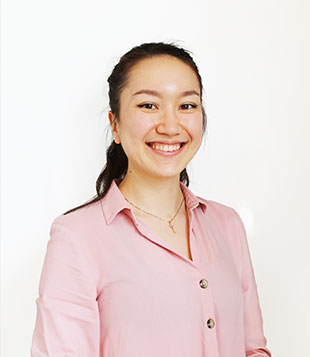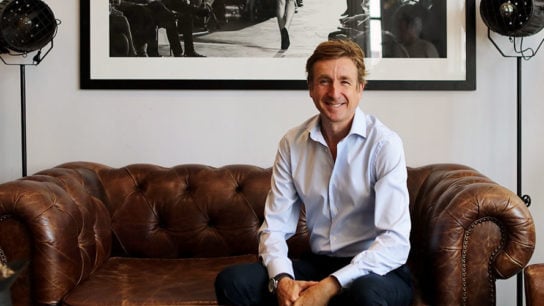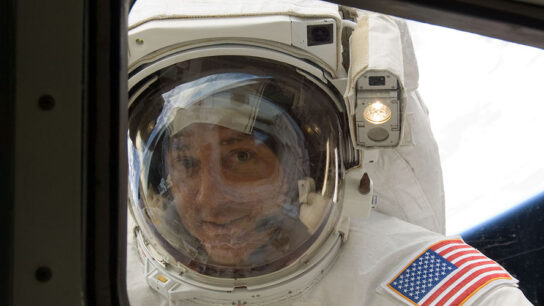Meet Kyra Poh, Singapore’s teen athlete defying both expectations and gravity in the nascent, adrenaline-filled sport of indoor skydiving.
Ever since she could walk, Kyra Poh has always wanted to fly. The Singaporean Visual Arts student fell into indoor skydiving – a niche sport in which acrobatic manoeuvres are performed while suspended in artificial winds of up to 230km/h (130mph) – accidentally at the tender age of eight.
Now 18 years old, Kyra has trained and competed for over half her life, and is one of the sport’s most decorated and recognisable athletes, despite still being among its youngest. She has over 30 medals and four Guinness World Records to her name, including one for the most backward somersaults in a wind tunnel in one minute (that’s 68 backward somersaults, in case you were wondering!).
Here, Kyra pulls back the curtain on her decade-long flying journey thus far; the challenges of being a professional student-athlete, what keeps her going, and her aspirations for the future.
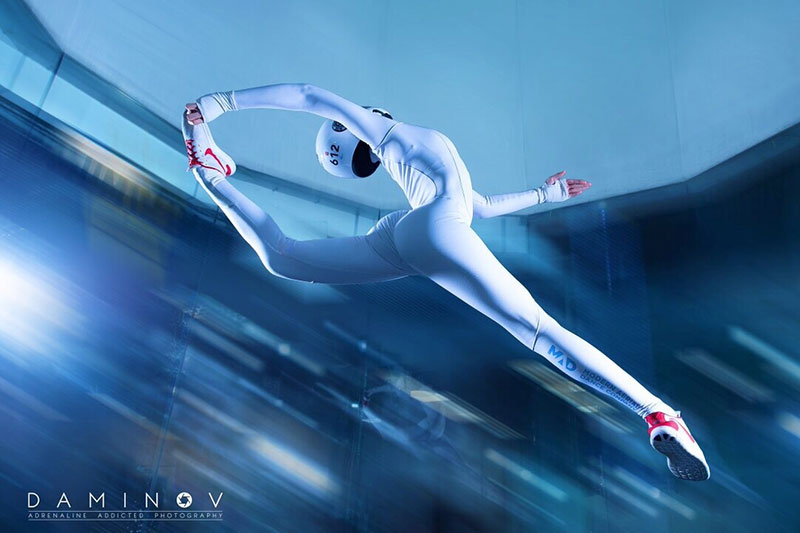
Photo Credit: Daminov
The Start of an Indoor Skydiving Career
“Humans are not meant to fly, but that has always been my dream,” Kyra begins. Growing up, she wanted to become an astronaut because she thought it was the only way she’d be able to fulfill that wish. “Of course,” she adds, “I don’t think I understood how much stress astronauts faced, or how long and hard their training was at the time!”
The perfect alternative presented itself in 2010 when Kyra was eight years old. Her mother Carolyn, an advertising executive, had been hired to film a commercial for iFly Singapore, home to the world’s first largest themed wind tunnel for indoor skydiving, and needed a child to star in the campaign. So, she brought Kyra, along with friend and future skydiving partner Choo Yi Xuan (aged nine) for a quick taster, both of whom took to the sport like ducks to water. “I just tried it by accident and fell in love as soon as I stepped into the wind tunnel,” recalls Krya, animatedly. “Indoor skydiving is a hard sensation to describe if you haven’t tried it before. People think that it’s like anti-gravity, but it doesn’t feel like you’re falling at all.” Thanks to the vertical airflow generated by powerful turbines in the ceiling, “there’s actually a sense of comfort in it; you feel extremely safe and extremely free, like you’re in an invisible harness that has no limits”.
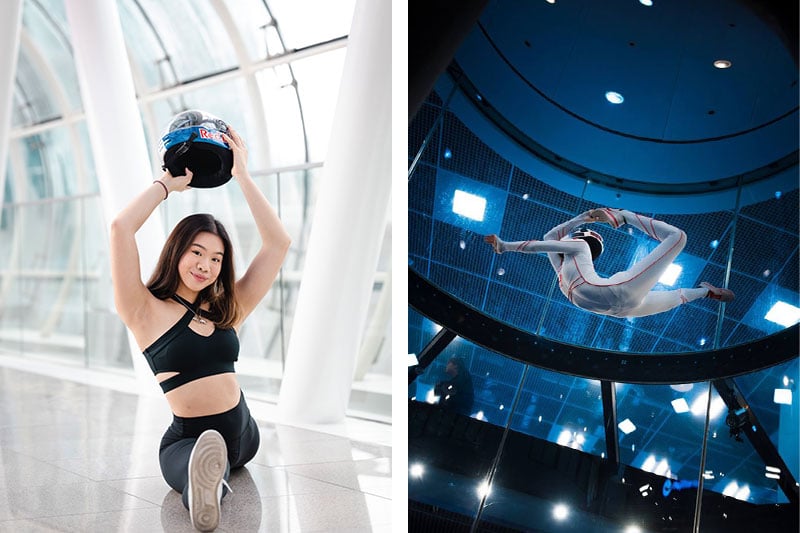
Photo Credit: Mike Loh (left)
The joyful pair immediately caught the attention of iFly Singapore’s founder and CEO, “Uncle” Lawrence Koh, who asked them to perform in his opening ceremony. “Training for that was how we got started, and it made us excited to learn more,” she explains. “But we only thought of doing it competitively when iFly Singapore held the Indoor Skydiving World Championships in 2012.” Although she was barely 10 at the time and had zero experience with international competitions, they managed to place sixth out of eight teams. “From there, we took part in more local competitions, then started going overseas for competitions – and here we are now!”
Kyra Poh: A Rapid Rise to Fame
Kyra’s big break came in 2016 at the Indoor Skydiving World Cup in Poland, where she clinched gold in the junior freestyle category aged 14. A few months later, she bagged two more gold medals at the 2017 Wind Games in Catalonia, the world’s largest indoor skydiving competition, earning herself the title of “World’s Fastest Flyer” among roughly 200 adult athletes. Kyra has won a grand total of 33 medals to date, and is one of only two indoor skydivers (the other being Polish athlete Maja Kuczyńska) to ever be sponsored by extreme sports promoter Red Bull. Ever eager to give back to her community, she is also a certified Tunnel Instructor, “which means I get to coach and hopefully inspire more children to take up this sport”.
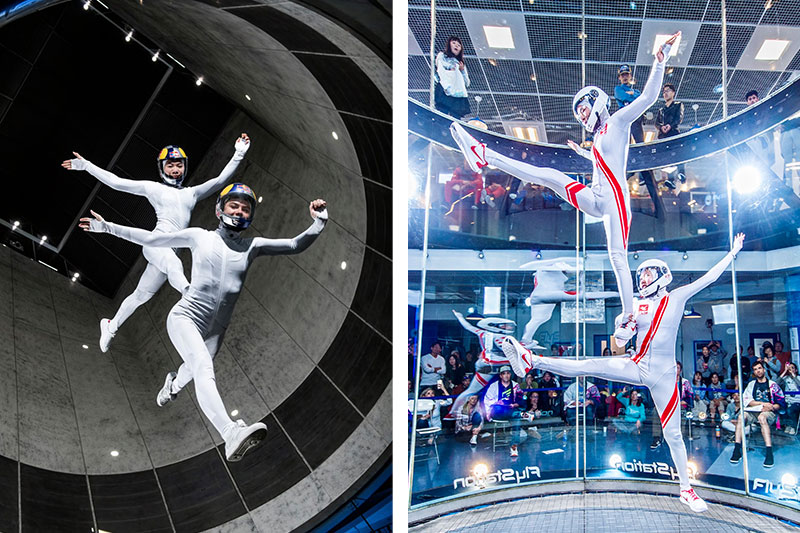
Photo Credit: Red Bull (left); Daminov (right)
But, the apparent ease with which Kyra flips, swoops, and twirls in the wind tunnel belies hundreds of hours of training, especially since she does not have a gymnastics or dance background like other female skydivers. “The whole aim of the sport is to make it look effortless, so people tend to think it’s easy,” she laughs. “In reality, controlling your movements and not losing your bearings when you’re suspended in mid-air, wearing a helmet that constricts your vision, takes a lot of practice”.
Another misconception Kyra grappled with was the question of whether her light frame gave her an advantage over her generally older, male competitors. “Yi Xuan and I received a lot of criticism at the start because people assume that the lighter you are, the faster you are,” she recalls. “We were always acknowledged based on our weight, not our skills or the hard work we put in. But, being small also means you have less body surface area, so you’re less able to push off or generate force.”
Indoor skydiving is rooted in aerodynamics. “If you have a bigger surface area, like when you’re on your back or belly, you’re going to catch more and float upwards, versus if you’re scrunched in a ball or flying head down,” she explains. This is further complicated by the fact that different competitive categories require different strengths, often at opposite ends of the physiological spectrum. In the ‘two-way dynamic’ category, for instance, two fliers must complete a series of moves as fast as possible, and are scored based on speed. By contrast, ‘solo freestyle’ involves a choreographed artistic routine designed to wow a crowd, and is scored based on creativity, technicality, and stability.

Photo Credit: Red Bull
To make it all happen, Kyra trains six days a week (sometimes twice a day) during competition season. “I don’t want to fall into just one category of flexibility or strength, so my training combines both.” A Year 6 student at the School of the Arts (SOHO), she maintains this gruelling schedule on top of her already-heavy academic workload. Each day generally consists of waking up at 6:20am for school, finishing at around 6pm, then making a beeline for iFly Singapore where she’ll train until 10pm, with breaks every 30 minutes due to how physically taxing each session can be. Afterwards, she heads back home and studies into the early hours of the morning, often managing only 3-4 hours of sleep before having to do it all over again. “Competitions usually clash with my exams too, which means I have to juggle training, travelling, and sitting for my exams all at once,” she says. “At one point, I think I had seven international competitions in a year, and each time, I’d have to change routines.”
Pushing Beyond Physical Boundaries
It’s hardly surprising, then, that Kyra is prone to overwork and stress. “I’m a really serious person, so sometimes I push myself way too hard in the tunnel and come back the next day with aches and pains everywhere,” she says, recalling the time she competed in four categories, each round within 10 minutes of the other. In 2014, the ambitious youngster fractured her rib while trying to attain her outdoor skydiving A-license within a period of 20 jumps in one week. After stunning the world with quite possibly the most advanced beginner skydiver footage ever, the 16th jump saw Kyra’s leg get caught in a fence, causing her to land chest-first on the ground. “It was my mistake because I’d only learned to skydive outdoors three days before. But I think that experience taught me more than if I hadn’t gotten injured because I know now that I can’t be too eager to do in the sky what I do in the tunnel. It’s taught me to be more aware as a sportsperson, rather than just focusing on the adrenaline rush.”

Being a young athlete has also forced Kyra to grow up quickly. She admits that an especially hard pill to swallow was learning how to lose with grace. “There were no kids categories when we first started out, so we had to compete with people twice or thrice our age – and of course, we just kept losing,” she says. “I would get really upset and throw tantrums because it crushed me not being able to see our hard work translate into results.” With tears now a thing of the past, Kyra prioritises “congratulating the winner and making them feel really, really happy” instead, choosing to view “failure” as simply a lesson on the value of commitment. “At the end of the day, if you’re passionate about something, defeat shouldn’t stop you from doing what you want to do.”
On how her relationship with indoor skydiving has changed over the years, Kyra says: “In the beginning, it was just pure love and laughter. Flying in the tunnel meant ‘play time’, so I wanted to do it every moment of every single day. But, of course, as you get more professional, the pressure only intensifies and you do get a little tired of it; the planning, the travelling, the late nights training. Don’t get me wrong, I still love it! But I think I love it in a different way now. Flying is less about fun and games, and more of something that’s made me who I am today, and that can push me further in my life”.
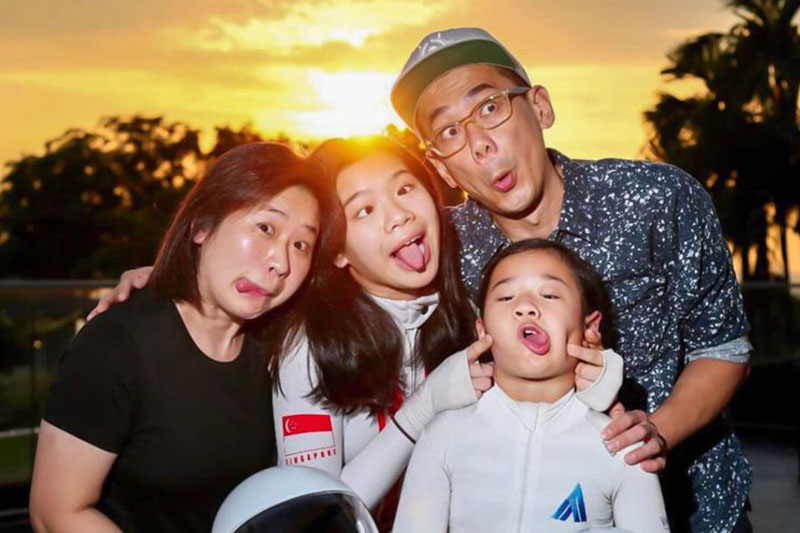
Future Plans
While COVID-19 has certainly thrown a spanner in the works, temporarily putting a hold on all wind tunnel training during Singapore’s circuit breaker measures, Kyra remains steadfast in her goals. “I’m in my last year of school, so I plan on moving to Europe for university because that’s where the majority of competitions take place and there are loads of great fliers there.” Her biggest dream is to represent Singapore in the Olympics, which would first require authorities to recognise indoor skydiving as an official sport. Vera, her younger sister, is following in her footsteps and competes internationally in indoor skydiving as well. “She’s 11 years old and she’s really good for her age,” Kyra says fondly. “My grandfather always wanted to see us fly together, so I hope to compete in a fun sister duo with her next year.”
For now, Kyra’s main priority is staying in peak form and “not getting bored” during this extended period of social distancing – the longest time she has ever gone without flying. “I’ve been doing a lot of stretching and strength training to stay in form, but it’s not the same without the wind tunnel experience,” she admits. “To everybody going through lockdown at the moment, try to keep yourself busy and find something new to learn. It can be really hard for me to feel productive when such a big part of my life is gone, so I’ve been learning how to do headstands and handstands. I also bought myself a spinner to practice spinning really fast out of the tunnel.”
Banner Photo Credit: Daminov
Related Articles
The Female MMA Fighter Who Risked It All To Go Professional
Kayla Alexander: WNBA Player on the Importance of Diversity
Why Athletes Make Great Entrepreneurs, According to Fitness Pioneer Billy Tam

